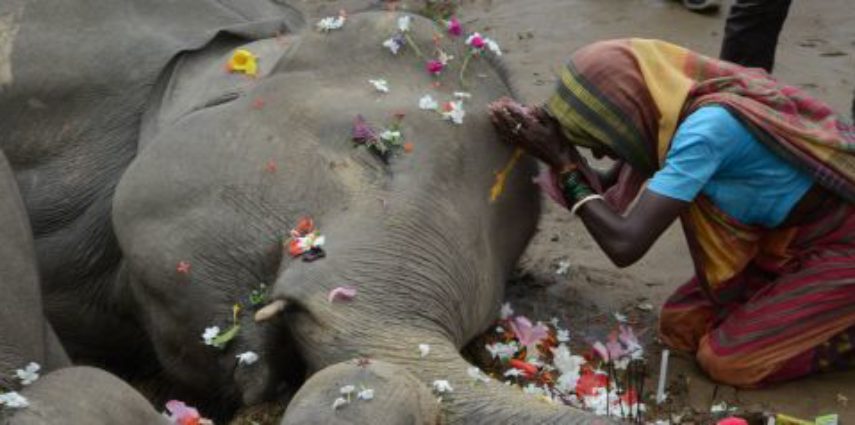When will it stop? That’s the question many of us in the animal rights movement are trying to grapple with, as the death toll of elephants in Kerala continues to rise. In just over eight months, 16 captive and five wild elephants have died due to human interference — that is more than two elephants a month.
The most recent casualty was a bull elephant named Manissery Devidathan, only 52 years of age. According to the Heritage Animal Task Force (HATF) Secretary, Mr. Venkitachalam, this elephant was forced to stand beneath the scorching sun in the same spot for more than a week, his hind legs paralyzed due to immobility, part of his right ear missing after ruthless torture, and his body swollen. For almost his entire life, this elephant was forced to participate in festivals, and transported between districts, with no rest during the festival seasons, a fate that all captive elephants of Kerala endure.
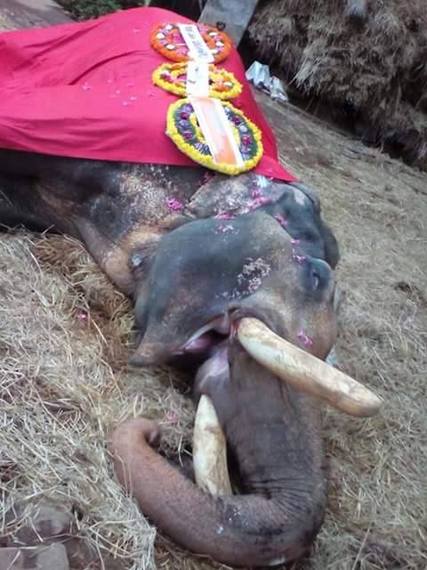
The same evening a 32-year-old cow elephant Jayasree, also died at an awfully young age! She was used illegally for elephant rides at a privately owned Valara Elephant Center in Idukki District. The HATF Secretary claims the center isn’t authorized to ride elephants as it doesn’t have the registration certificate required by the Performing Animals (Registration) Rule 2001, and this is a punishable offence.
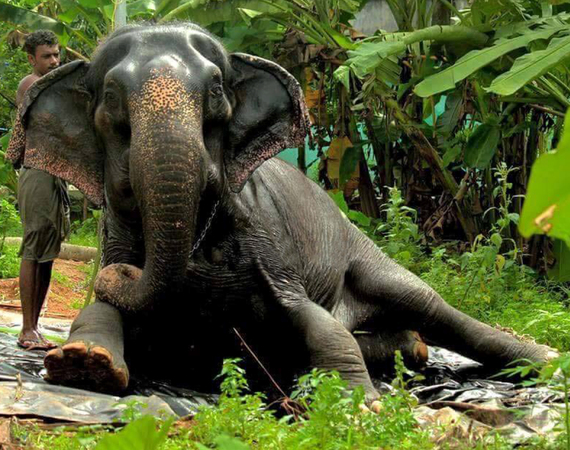
On September the fourth, even as people in Mumbai were ushering in Lord Ganesh (the most popular Hindu God with an elephant face) for his birthday celebrations, a young elephant died a miserable death. The 22-year-old bull named Lakshmanan was tethered 24/7 and unable to move. His puss filled legs in this image below reveal sad tales of torture and neglect. He was owned by a man named Shaji, whose family is said to possess 18 elephants.
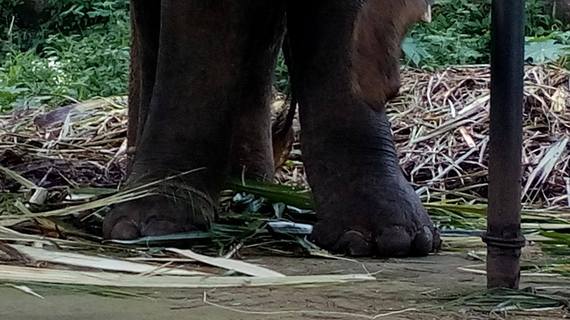
Wild Asian elephants are also in peril. The forests are shrinking as people are encroaching into the wilderness, pushing elephants into smaller areas and sparse vegetation. So naturally, these elephants return to the agricultural land that once belonged to them. Sadly, poisonous pesticides and electrical barb wires have killed at least five elephants this year alone. They are doomed if they live in the forests and doomed if they come out, as human activities are decimating them.
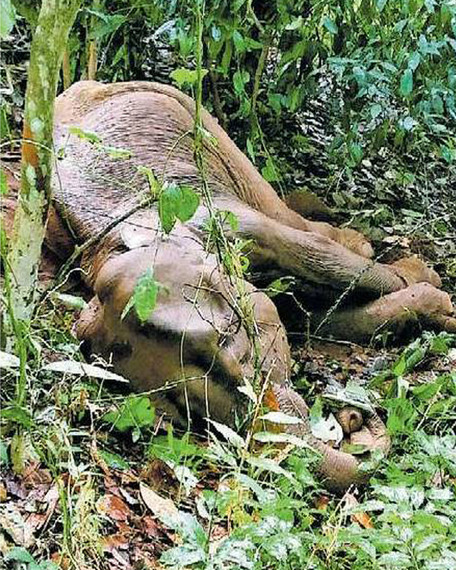
On September 8th a young calf, just six years of age was found dead inside a Tea Estate near the Wayanad forests, poisonous pesticides seem to have caused the tragic death. On August 25th a cow elephant was electrocuted in the same area. But no arrests have been made in connection to even the previous deaths of four wild elephants spanning over the last four months.
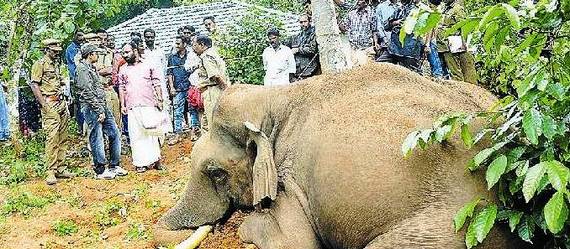
Human-elephant conflict isn’t new to India. With 1.3 billion people living in a 3.3 million square kilometer area, the less than 26,000 Asian elephants stand no match against the humans that continue to multiply by the second. According to Dr. Raman Sukumar, a world renowned ecologist and professor at the Indian Institute of Science interviewed for Gods in Shackles documentary, out of the approximately 40,000 Asian elephants around the world, more than 60 per cent of them thrive in India, with 4,000 to 4,500 elephants in captivity. The International Union for Conservation of Nature has declared Asian elephants an endangered species. They were elevated to India’s heritage animal status in 2010, and are considered to be the embodiment of Lord Ganesh.
But regardless, the reverence that was once bestowed upon these gentle giants has deteriorated drastically in the past few decades. These sentient, social animals are being used as cash machines and exploited for profit in circuses, zoos, tourism and worst of all in cultural festivals under the guise of religion. Not a single species on the planet is as deceptive and destructive as human species.
So, when will this suffering end? In April 2015, the Wildlife Rescue and Rehabilitation Center launched a petition against the states that use captive elephants for entertainment and tourism. Several hearings and 16 months later the Supreme Court of India is expected to deliver a verdict in the next two weeks. And the world anxiously awaits a judgement that will seal the fate of an iconic animal.

